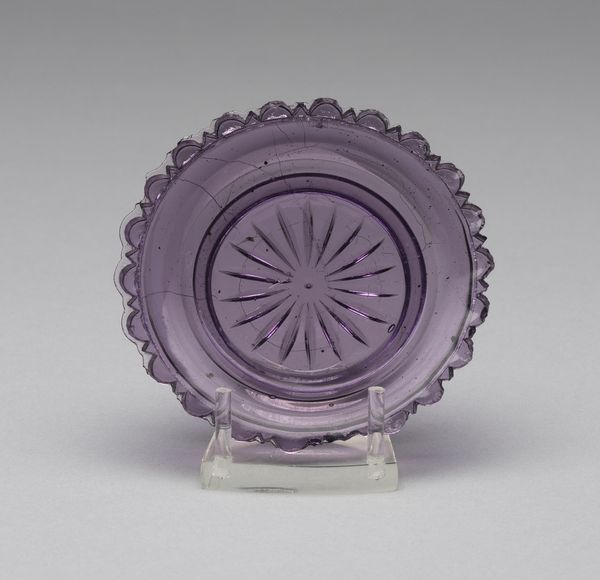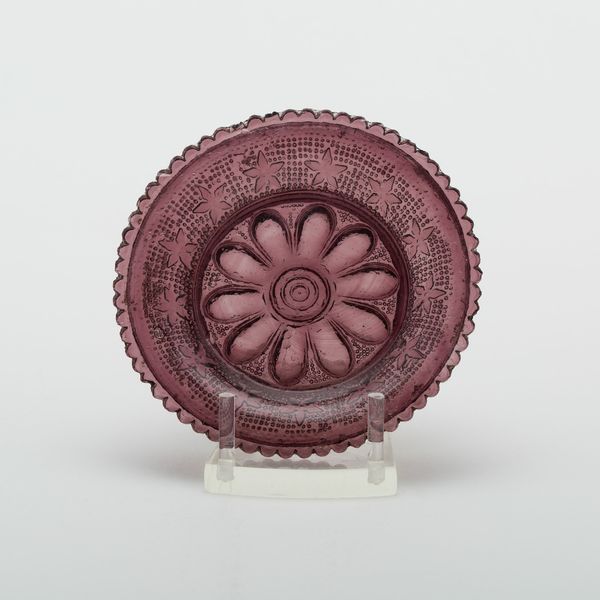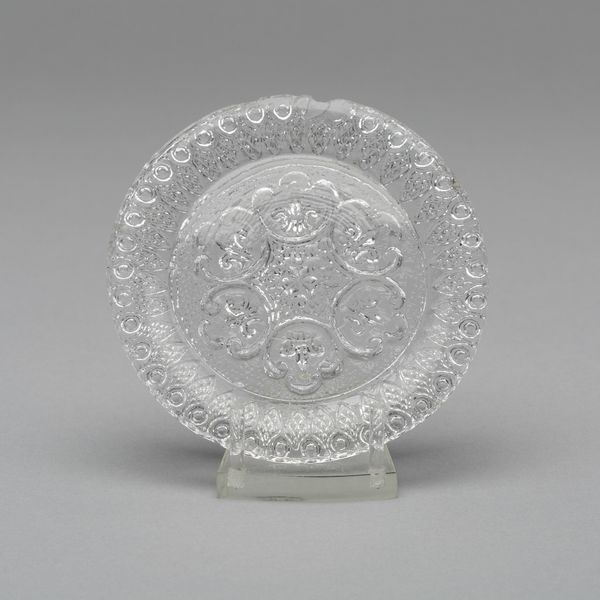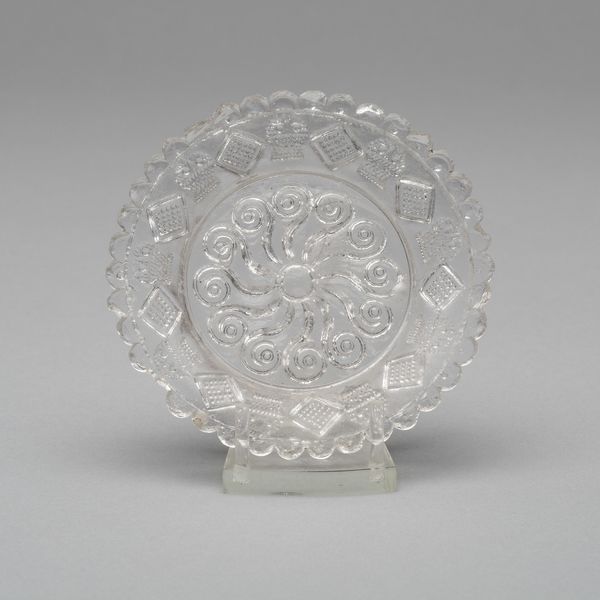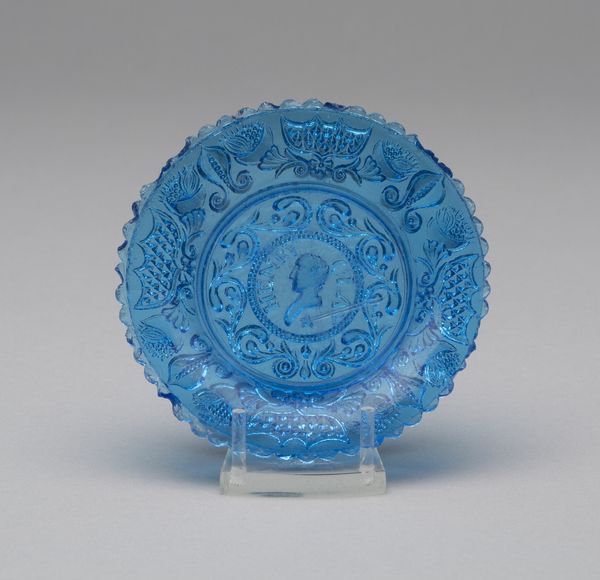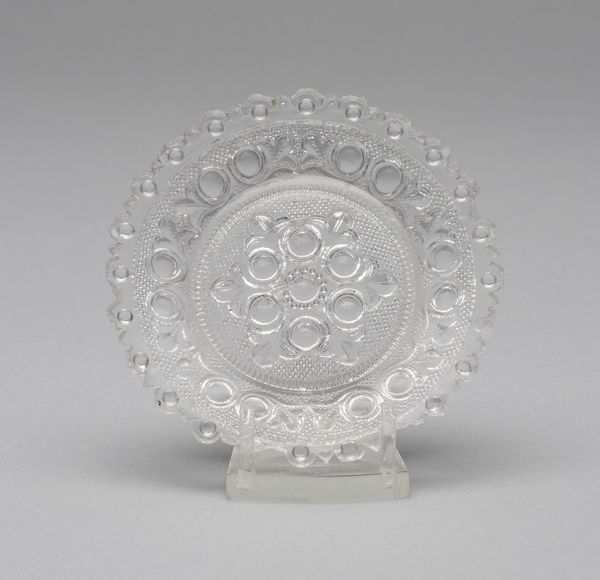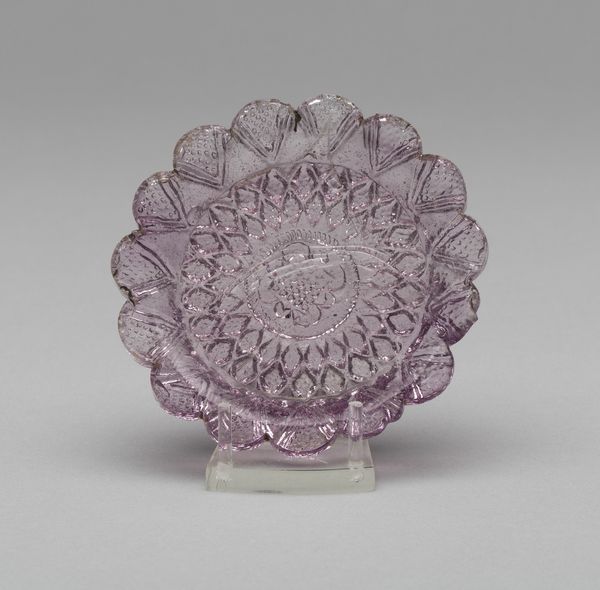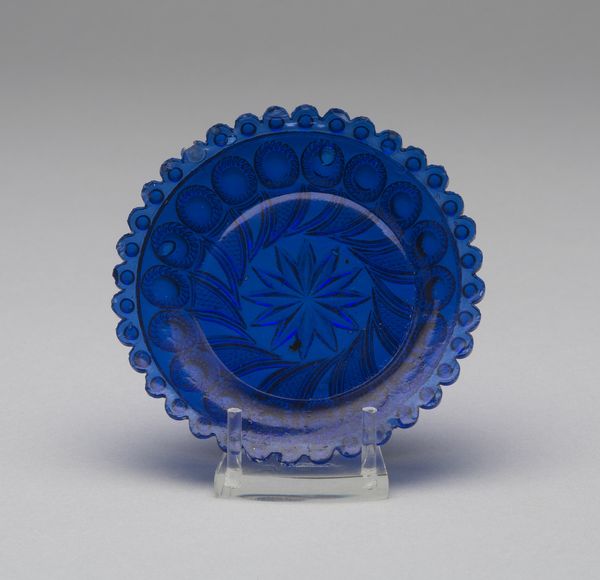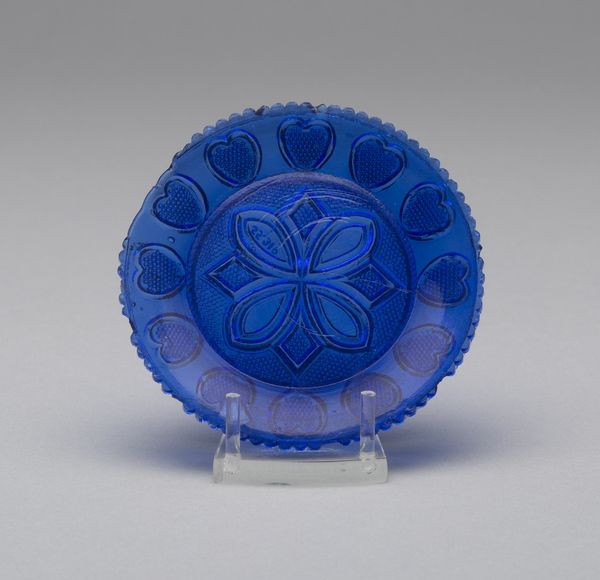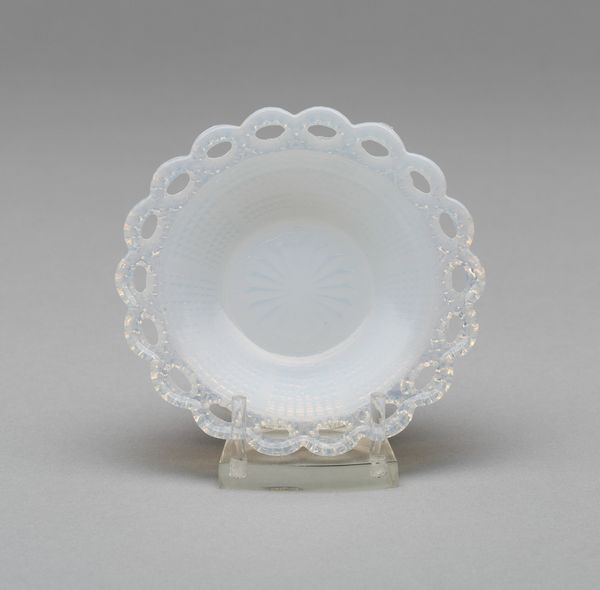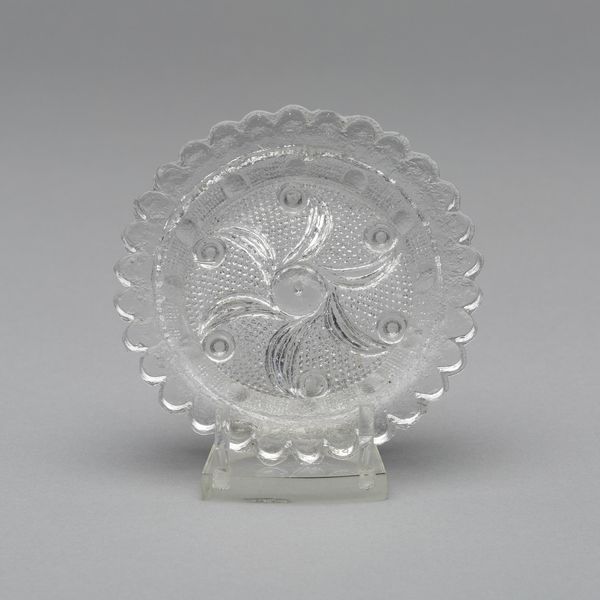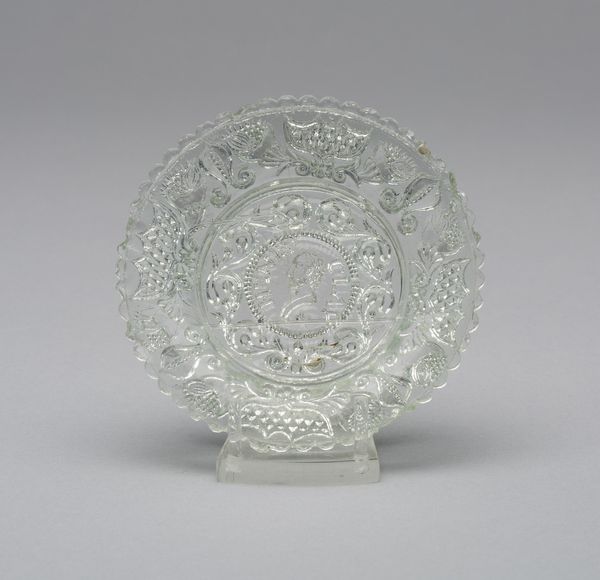
ceramic, glass
#
ceramic
#
glass
#
ceramic
#
decorative-art
Dimensions: diam. 7.3 cm (2 7/8 in.)
Copyright: Public Domain
Curator: Here we have an object titled “Cup Plate,” dating from sometime between 1800 and 1850. It can be found right here at the Art Institute of Chicago. Editor: It's immediately striking—that delicate purple hue is really captivating, and I'm quite intrigued by its size, suggesting a utilitarian purpose, though its fragility gives it a certain air of elegance. Curator: Exactly. These cup plates were common during a period of burgeoning middle-class prosperity, tied directly to evolving social rituals around tea and coffee consumption. As hot beverages became fashionable, people poured their tea or coffee from the cup into the saucer to cool, and they'd use a plate like this for setting the cup down to prevent table stains. Editor: It speaks to class in so many ways. One has to think about not only what the culture of drinking tea might mean—what behaviors and beliefs it produces—but also the aesthetics involved. I think of theories on decorum. To what extent is that kind of rigid, mannered social performance, a means of asserting social status? And consider its materials! Curator: Well, this plate, crafted from pressed glass, also speaks to industrialization and its effect on decorative arts, providing us with evidence for the rapidly evolving culture of the 19th century in America. We must not forget that such industrial and commercial development was fueled by systems of forced labor. These sorts of objects, produced in an era of global expansion and colonial exploitation, must be critically situated in a network of oppressive political and economic conditions. Editor: From a purely formal perspective, I appreciate the symmetrical arrangement and repeating pattern. It really creates a captivating composition—a perfect blend of practicality and ornamentation. I wonder how it participates in semiotic systems related to bourgeois notions of “taste.” Curator: That aesthetic focus does have some worth, of course, because these designs, often floral or geometric, became statements of personal style. It adds depth to understanding social relationships with the decorative arts that flourished alongside the rise of industrialism, even if they seem innocuous at first glance. Editor: Yes, considering that visual tension as embedded within the semiotic field creates new awareness of the formal arrangement itself! Curator: I think it's crucial we use these unassuming items as historical lenses for grasping broader cultural and economic narratives and begin decolonizing this cultural space, moving past strictly aesthetic notions. Editor: Right! By exploring its visual organization, cultural values, and the confluence of material production within political history, a plate meant to guard against spills teaches us to excavate histories rather than simply appreciate surface sheen.
Comments
No comments
Be the first to comment and join the conversation on the ultimate creative platform.
